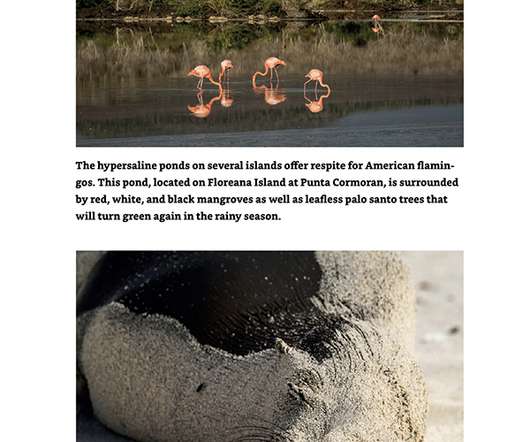Galápagos: A Natural History, Second Edition–A Book Review
10,000 Birds
FEBRUARY 7, 2023
Galápagos: A Natural History, Second Edition by John Kricher and Kevin Loughlin gives the traveling naturalist the tools needed to fully appreciate and experience the Galápagos Islands. Where once there were 13 species of “Darwin’s finches,” there are now 17. Still, I wish I had prepared. I wish I had read this book.












Let's personalize your content